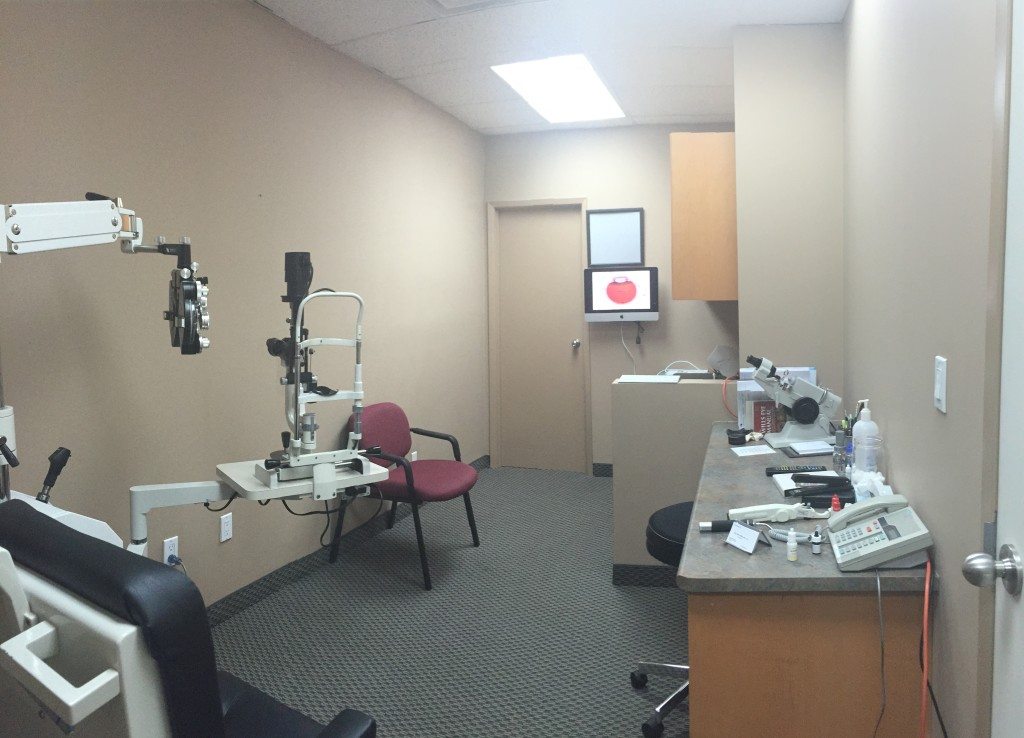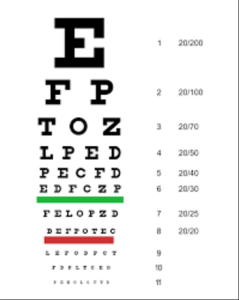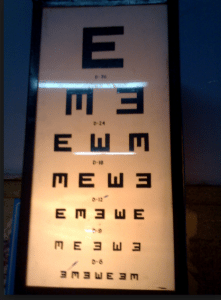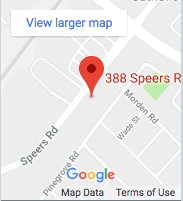When you go for an eye exam, your eye doctor uses an eye chart to measure how well you see at a distance compared with others. The classic example of an eye chart is the Snellen eye chart, which was developed in the 1860’s by Dutch eye doctor Hermann Snellen, but there are others. Let’s look at the different types of eye charts and what it means to have 20/20 vision.
The Snellen Eye Chart
Many different variations of the Snellen eye chart are used, but generally they display 11 rows of capital letters with the top row containing one letter, usually the capital letter “E”. Subsequent rows contain letters that get gradually smaller.
During your eye exam, your eye doctor will ask you to find the smallest line of letters that you can see and ask you to read it. If you can read the bottom row of letters, your eye sight is very good.
Tumbling E Charts
The tumbling E chart is often used to test the visual acuity of young children and others who can’t read letters aloud. Other times it is used when the person being tested is illiterate or has another handicap that makes it impossible for him to recognize letters or read them aloud.
This chart works the same way as a standard Snellen eye chart, but all of the characters on the chart are capital letter “E” in different spatial alignments. That is, they are rotated in increments of 90 degrees and facing either right, left, up or down.
The person being tested is asked to use extended fingers to show which direction the “fingers” of the E are pointing. It has been shown that visual acuity measurements using a tumbling E chart are essentially the same as those obtained from testing with a standard eye chart.
Jaeger Eye Charts
Your eye doctor may use a small hand-held card called a Jaeger eye chart to test your near vision. This chart consists of short blocks of text in various type sizes. The type scale ranges from J1 to J11 or larger, with J1 being the smallest type. J2 is considered the equivalent of 20/20 distance vision at the reading distance indicated on the card, which is usually 12 to 14 inches from your eyes.
Depending on what your eye doctor is trying to measure, the Jaeger chart can be used in two different ways.
- The chart is held at a certain reading distance and you are asked to read the smallest type you can see.
- The chart is moved forward and back until you are able to read a specific type size.
What 20/20 Vision Means
In most cases an eye chart is hung on a wall 20 feet away from your eyes. If the doctor’s office isn’t 20 feet long, the eye chart may be hung behind the patient’s chair and mirrors used to make it appear in front of them, simulating a distance of 20 feet.
If you can read a letter at 20 feet that most human beings should be able to read at 20 feet, you have 20/20 vision. This is considered “normal” vision.
If you can read the big E at the top but nothing below it, your vision is considered 20/200, which is very poor. It means you can read a letter at 20 feet that people with “normal” vision can read at 200 feet.




